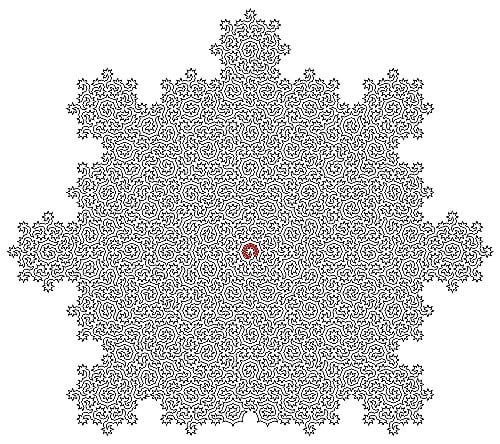iStockphoto
Pretty much everyone has attempted to solve at least one maze in their life. Whether it was as a kid on a menu at a restaurant, or as an adult in a corn maze in the fall, it’s the type of challenge that a lot of people relish.
Usually they aren’t the difficult to solve, but a team of physicists from the United Kingdom and Switzerland have created a maze that is literally almost impossible to figure out.
This confounding maze wasn’t created just for fun though. As the scientists explain in their research paper, published in the journal Physical Review X, it was made for a much higher purpose.
Using geometric concepts the average person has never even heard of, like Hamiltonian cycles and Ammann-Beenker tilings, this maze was designed to help better understand something called quasicrystals.
Quasicrystals, or quasiperiodic crystals, are, by definition, structures that are ordered, but not periodic, while a quasicrystalline pattern can continuously fill all available space, but lacks translational symmetry.
Very few quasicrystals have ever seen on Earth. According to Popular Mechanics, three were discovered in a meteorite discovered in Siberia, while another, artificial quasicrystal was created by the first nuclear explosion at Trinity Site in New Mexico.
Quasicrystals, the scientists explain, are like “slices through a crystal that live in six dimensions.”
“When we looked at the shapes of the lines we constructed, we noticed they formed incredibly intricate mazes,” lead author of the study, Dr. Felix Flicker of the University of Bristol, said in a statement. “The sizes of subsequent mazes grow exponentially—and there are an infinite number of them.”

University of Bristol
“We show that certain quasicrystals provide a special case in which the problem is unexpectedly simple,” Dr. Flicker added. “In this setting, we therefore render some seemingly-impossible problems tractable. This could include practical purposes spanning different realms of science.”
For example, ‘adsorption’ is a key industrial process in which molecules stick to the surfaces of crystals. So far, only crystals are used for adsorption industrially. If the atoms of a surface admit a Hamiltonian cycle, flexible molecules of the right size can pack with perfect efficiency by lying along these atomic mazes.
The research results demonstrate that quasicrystals can be highly efficient adsorbers. One use of adsorption is carbon capture and storage, in which CO2 molecules are stopped from entering the atmosphere.
“Our work also shows quasicrystals may be better than crystals for some adsorption applications,” said study co-author Shobhna Singh, a PhD researcher in Physics at Cardiff University. “For example, bendy molecules will find more ways to land on the irregularly arranged atoms of quasicrystals. Quasicrystals are also brittle, meaning they readily break into tiny grains. This maximizes their surface area for adsorption.”
Plus, they make really cool mazes.

